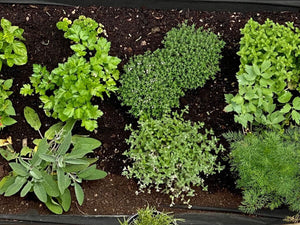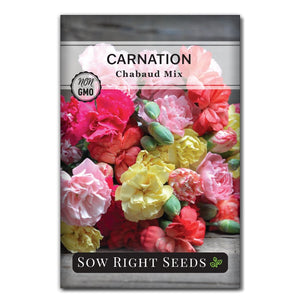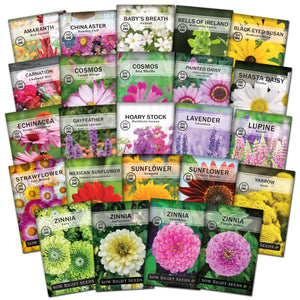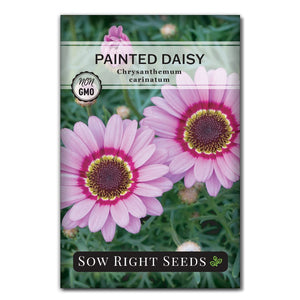From Garden to Vase: How to Keep Cut Flowers Fresh
Flower farmingI love growing flowers just for the joy of bringing them indoors. However, I’ve also learned that keeping those flowers fresh and vibrant requires a bit of know-how. In this post, I’m sharing my favorite tips for making your garden-fresh cut flowers last. With just a few simple steps, you can enjoy beautiful bouquets that brighten your space for days.

How do you keep cut flowers fresh when you are cutting your own?
Moisture is the most important consideration in keeping cut flowers fresh. Once a stem is cut off, it’s no longer getting the nutrients and water flow it needs through the roots. But the plant’s need for water and nutrients hasn’t ended.
A cut flower will continue to bloom as long as it is “turgid.” Which means it is fully engorged with water. This will allow it to unfurl its petals into their full beauty. However, a flower will continue to lose water through transpiration. So to keep it from wilting, it needs to be taking in as much water as it is losing.
Pro tip: Cutting flowers early in the morning when they are the most hydrated will help make sure your cut flowers last longer.

How does water temperature affect cut flowers?
Placing stems in warm water when first cut will facilitate quick water uptake.
Flowers cut from bulbs that bloom in cold weather will do better in cold water.
But all other flowers should have lukewarm water.
Keep water clean
Keeping the water clean is essential. Microbes can block the vessels (xylem) that take up water. Make sure all vases and containers are clean enough to drink out of, and change the water daily. You can hold onto the flowers to dump the water out and then refill the vase with lukewarm water. Make it a habit to change the water every 3 days.
Repair damage to stems
Stems can be damaged and also be blocked by air bubbles. Scabs are formed when the stem tries to repair from the cut. Cutting the stems every few days with sharp floral scissors at a 45-degree angle will help your flowers continue to take up water, stay fresh, and last longer.
What is the best storage temperature for fresh cut flowers?
If flowers are going to be stored before display, 35-40ªF is best for most flowers. Cooling slows down plant tissue death, whereas heat speeds up plant chemistry, making them bloom faster and take up nutrients more quickly.
Once the flowers are on display, an average room temperature of 72ªF is optimal. Warmer temperatures will result in a shorter flower life.
Humidity is also a factor in the vase life of flowers. Dry air will pull more water out of the leaves, and keeping flowers out of the sunshine and away from fruit will also help them last longer.

When you bring those fresh-cut flowers inside from your cutting garden, you want them to last as long as possible. With just a few simple steps, you can enjoy your fresh flowers and arrangements longer.
The effect of ethylene on cut flowers
Ethylene gas is produced naturally by ripening fruit and aging plants. The more ethylene gas present, the faster the fruit ripens and the flowers bloom. In commercial operations, silver nitrate is used to stop flowers from producing ethylene. However, it can also prevent them from fully blooming.
To slow down the ripening process in your cut flowers, keep them away from fruit. Remove dying leaves and buds and trim stems every few days. Rotting leaves and stems produce ethylene and bacteria resulting in shorter vase life.
Tips for milky stems and murky water
Milky stems need to be seared so that the milk doesn’t clog the stems of other flowers. One way to sear the ends of milky stems, such as poppies, is to dunk the stem ends in boiling water for 30 seconds. Another option is to apply heat from a flame for 30 seconds.
Some flowers, such as zinnias, yarrow, sunflowers, and black-eyed Susans, will turn the water murky. You can add a few drops of bleach to a quart of water to keep it clean. Change the water frequently.

What is a flower preservative?
You may wonder if a flower preservative will help your flowers last longer. Since flowers are living things, they have requirements that need to be met to continue living. The three things that cut flowers need to stay fresh are carbohydrates, biocides, and acidifiers.
Carbohydrates: Plants need carbohydrates for food. Once the flower is cut, it will not be able to get its needs met through the roots, and it will only have a limited supply of “food” in its leaves. The flower will need food to continue to bloom. Dextrose is a form of sugar used in commercially prepared floral preservatives.
Biocides: Biocides are needed to keep the water clean. Bacteria will clog the stems and keep water from flowing through the flower. A few drops of bleach are all that’s needed to kill microbes.
Acidifiers: Acidic water moves more easily through cut stems. Keeping the water at an acid pH level will facilitate better water uptake and also help control microbes.
While commercially prepared flower preservatives have been shown to prolong cut flowers, homemade preparations have mixed results. This is usually due to not getting the acid levels right.
Homemade Fresh Flower Preservative Recipe:
- 1 teaspoon of sugar
- 1 teaspoon bleach
- 2 teaspoons lemon juice
- 1 quart of water
Add ingredients to a water-filled vase or container, and mix together very well. It is important to make sure it is mixed well before adding flowers. Like dirt and bacteria, chunks of preservatives can also clog up stems.

Fresh Cut Flower FAQs
How long should cut flowers last in a vase?
Most fresh-cut flowers last 5 to 10 days, depending on the flower variety and care.
Should I change the water daily for cut flowers?
Yes. Change the water every day or 2 to prevent bacteria buildup and extend the life of your arrangement.
Do cut flowers need sunlight?
No. Direct sunlight speeds up wilting. Keep cut flowers in a cool, shaded location.
Why are the leaves turning slimy in my flower vase?
Leaves left underwater rot quickly and feed bacteria. Always strip leaves below the water line when arranging flowers.
Although cut flowers are perishable, I love bringing them indoors. Perhaps that is part of their appeal. We know they won’t last forever, so we enjoy them while we can. And by growing your own cut flower garden, you will have plenty of blooms to enjoy.
Start growing your favorite heirloom flowers and bring more beauty into your life.









Leave a comment